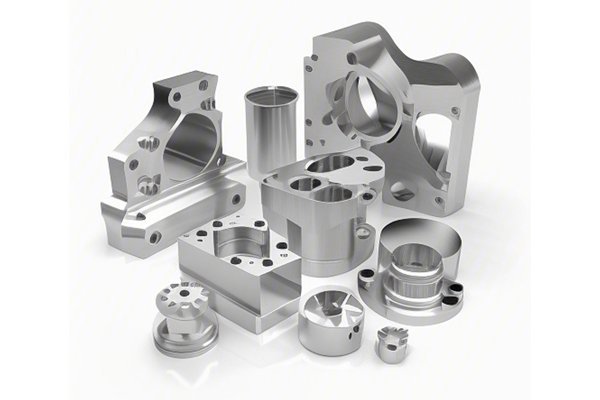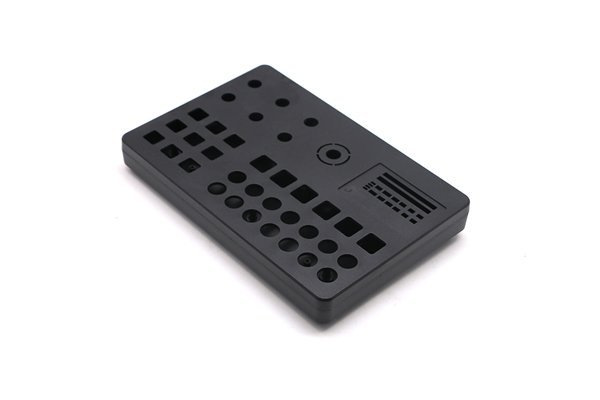: Unleashing the Power of CNC Machining
Did you know that according to a report by MarketsandMarkets, the global CNC machine market is projected to reach $117.04 billion by 2026, growing at a CAGR of 7.7%? This staggering growth indicates a massive shift towards automation and precision engineering in industries worldwide, particularly in industrial design. With demands for high-quality custom parts on the rise, CNC (Computer Numerical Control) machining has become a go-to solution for manufacturers looking to create intricate aluminum components efficiently and accurately.
But what makes CNC machining stand out, especially for custom aluminum parts in industrial design? This blog digs deep into the unique advantages of utilizing CNC machining for custom aluminum components, outlining essential techniques, industry applications, and top considerations that can elevate your design projects to new heights.
Understanding CNC Machining: The Basics
CNC machining is an advanced manufacturing technique that employs computer-controlled tools to shape and cut materials. This method allows for a high degree of precision and accuracy, making it ideal for industries requiring complex designs and tight tolerances. CNC machines can operate across various processes, including milling, turning, drilling, and more, allowing for a wide range of customizations.
Aluminum has become one of the most preferred materials in industrial design due to its lightweight, corrosion resistance, and excellent machinability. Let’s explore the reasons why CNC machining is the optimal choice for producing custom aluminum parts.
Key Advantages of CNC Machining for Custom Aluminum Parts
One of the most significant benefits of CNC machining is the precision it offers. CNC machines can replicate complex designs with incredible accuracy, down to micrometers. This level of detail is vital in industrial design projects where even the slightest deviation can lead to performance issues or product failure.
Example: For an automotive manufacturer, using CNC machining to design aluminum engine components ensures that each part fits perfectly, contributing to overall engine efficiency.
CNC machining allows for virtually limitless design possibilities. Whether an engineer needs simple shapes or intricate geometries, CNC machines can accommodate various designs without requiring extensive retooling or time-consuming setups.
Application: In the aerospace industry, where components must meet strict safety standards, CNC machining can produce complex parts like brackets, frames, and housings that carry both structural integrity and aesthetic value.
Once the design is finalized, CNC machining allows for easy scaling of production. Unlike traditional methods that may require manual labor and are limited by human capability, CNC machines can produce large quantities of parts consistently and efficiently without compromising quality.
Benefits: High-volume production leads to reduced costs per unit, making CNC machining a cost-effective option for businesses.
CNC machining optimizes the use of raw materials, allowing manufacturers to minimize waste. Unlike manual machining, where excessive material can be cut away, CNC machining uses software to calculate the most efficient cutting paths, conserving as much material as possible and reducing overall costs.
Tip: Choosing aluminum grades that are not only suitable for your designs but also offer machinability can further enhance cost efficiency.
CNC machining excels at crafting parts with complex geometries, including tight tolerances and curves. This capability opens doors for innovative designs that were previously challenging or impossible to achieve through conventional machining.
Insight: Designers can engage in creative freedom, pushing the boundaries of what is feasible without worrying about manufacturing limitations.
CNC machines can operate autonomously, reducing the need for constant human intervention. This automation facilitates uninterrupted production cycles and increases operational efficiency.
Example: In a manufacturing setting, a CNC machine can run overnight, producing parts while employees focus on other critical tasks.
CNC machining integrates with various cutting-edge technologies, such as CAD (Computer-Aided Design) and CAM (Computer-Aided Manufacturing). This synergy allows designers to visualize parts in 3D before production and make adjustments quickly, leading to improved outcomes.
Application: For industrial designers, this integration enhances collaboration across teams and accelerates the development process.
Techniques for Successful CNC Machining of Custom Aluminum Parts
The choice of aluminum alloy has a significant impact on the machining process. Certain alloys are more conducive to CNC machining, providing better results in terms of strength, weight, and surface finish.
Common Aluminum Alloys for CNC Machining:

Selecting the right tooling and machining parameters—such as speed, feed rates, and cutting depths—is crucial for achieving high-quality aluminum parts. The use of carbide tools, coated tools, and specialized milling techniques can enhance both performance and surface finish.
Best Practices:
Implementing quality control measures throughout the CNC machining process ensures that the finished parts meet the required specifications. Techniques such as in-process measurement and final inspections not only uphold quality standards but also minimize rework costs.
Recommendation: Adopt methods like statistical process control (SPC) to monitor the machining process in real-time, allowing for immediate corrections if deviations arise.
Aluminum parts often need post-machining treatments to improve properties such as corrosion resistance and surface finish. Options include anodizing, painting, powder coating, or polishing.
Advantages of Post-Treatment:
Industry Applications of CNC Machining for Custom Aluminum Parts
The versatility of CNC machining makes it suitable for a wide range of industries. Here are some key sectors that have capitalized on the benefits of CNC machining for their custom aluminum part needs:
Automotive Industry
CNC machining has become integral to the automotive sector, where precision and quality are vital. From engine components to chassis parts, CNC-machined aluminum components contribute to vehicle light-weighting and fuel efficiency.
Aerospace Industry
In aerospace design, every ounce matters. CNC machining allows manufacturers to produce lightweight components that comply with strict industry regulations while maintaining structural integrity.
Electronics Industry
Custom aluminum housings for electronics, including casings for computers and communication devices, benefit significantly from the precision and finish achievable through CNC machining.
Medical Devices
The medical industry relies on CNC machining for manufacturing components that must meet stringent safety and performance standards. Custom aluminum parts are often used in surgical instruments and diagnostic equipment, where reliability is paramount.
Implementing CNC Machining for Your Design Projects
Before initiating CNC machining, evaluate what your project requires. Consider the necessary design complexity, volume of production, and specific properties the final parts must exhibit.
Choosing the right CNC machining service can significantly impact the success of your project. Look for suppliers with experience in your industry, a proven track record of quality, and advanced technology at their disposal.
Considerations: Evaluate turnaround times, costs, and their ability to work with custom designs.
Engage in an open dialog with your machining partner about your design specifications. Utilize CAD files to demonstrate your ideas clearly. Their engineering expertise can provide valuable insights into optimizing your design for manufacturability.
In summary, CNC machining stands as the hallmark of precision manufacturing, especially when creating custom aluminum components in industrial design. This advanced technique offers unmatched advantages including accuracy, versatility, scalability, and cost-effectiveness. By leveraging CNC machining for your projects, you can push the boundaries of design while ensuring high-quality outcomes.
As you navigate through your projects, consider how CNC machining could enhance your operations. It’s not just about the machinery; it’s about unlocking innovation, elevating product quality, and maximizing efficiency. By understanding and applying the techniques discussed in this blog, you can make informed decisions that propel your designs into the future.
—






